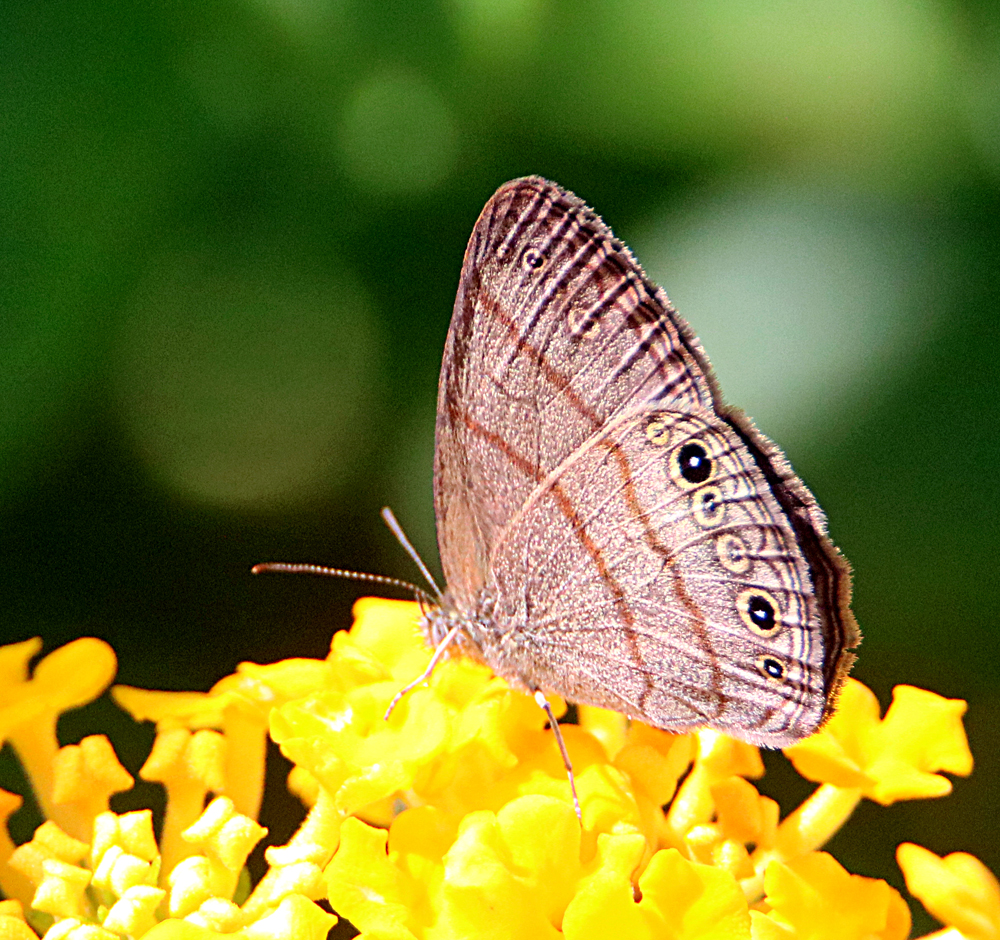And in 2025 I got multiple new species, mostly in my Garden as are most of these photos! This is just a sampling with my effort to not show 2 of the same species . . .

And in 2025 I got multiple new species, mostly in my Garden as are most of these photos! This is just a sampling with my effort to not show 2 of the same species . . .

A regular in my garden, though not recently, and easy to confuse with Esmeralda Skipper, is the Long-tailed Skipper, Urbanus proteus (my gallery link). It is found all over the southeastern U.S., the Caribbean Islands and Central America.
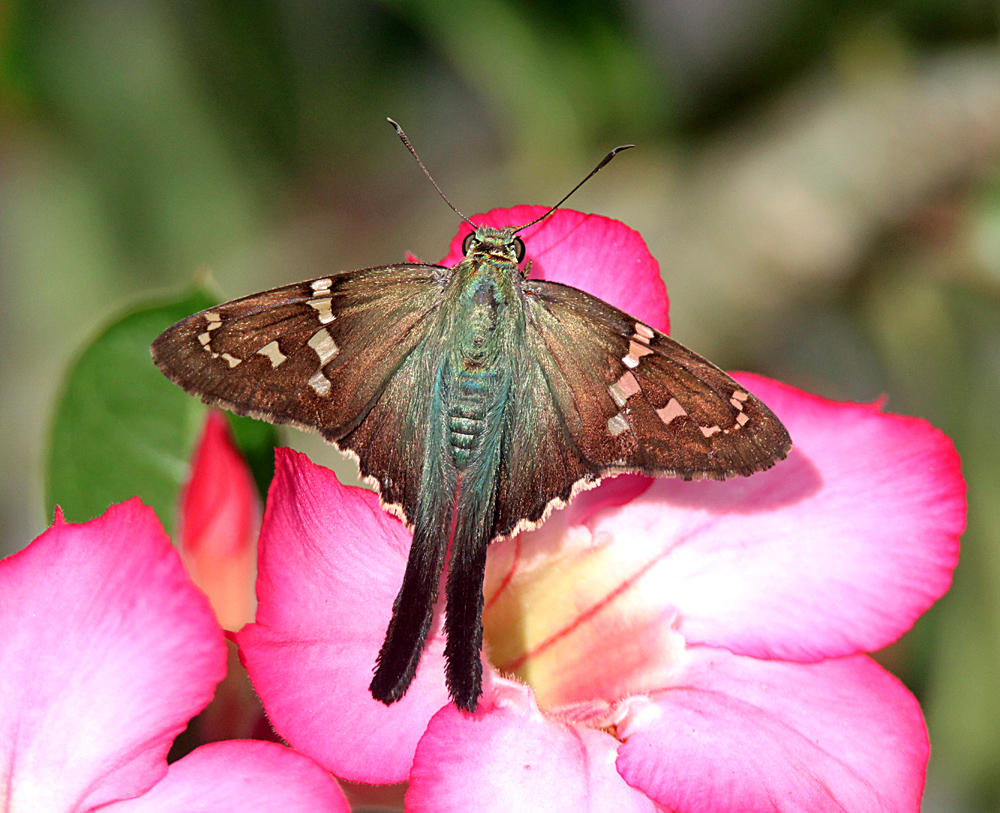
And oh yeah, this is the first butterfly I have seen on the Desert Rose flower in the 7 or 8 years I’ve had it. But you can see that he is not eating nectar, just resting. The flower is just too deep for most butterflies and hummingbirds. 🙂
¡Pura Vida!
Extra Costa Rica News Article:
“Costa Rica now ranks second in the world for worst traffic congestion, according to new 2025 Numbeo data, with commute times and CO2-heavy gridlock far above the global average. The report underscores how daily jams are hitting quality of life and the environment, especially in the Central Valley.” Tico Times Article.

It is mainly inside and around the capital city of San Jose where I have to go with a driver for most of my medical specialist appointments. Realtors in Atenas will tell you that we are only 45 minutes to an hour from San Jose – well . . . maybe at 2 am! 🙂
It is not unusual for my trips to Hospitals Mexico or Blanca Cervantes to take 1.5 to 2 hours depending on time of day, accidents, or highway construction. It is frustrating that there are not enough lanes on the major highways AND that (like in the U.S.) most cars have only one person in them! Many, if not most, tourists want rental cars for the independence and freedom to go where you wish whenever. But many become very frustrated trying to drive here, especially in and around San Jose traffic, while in rural areas it is the pot-holed narrow roads and one lane bridges (or river fording) that make for an adventure. 🙂 I recommend tourists to stay in one place when here for less than two weeks and use lodge or van services to get to and from the airport. Though there is a sense of adventure when driving in Costa Rica! 🙂
And oh yeah! Who are we second to? Nigeria! And having traveled all over Africa, I would put the whole continent as worse than Costa Rica, but this ranking was based on some kind of research. And perceived paradises do have their drawbacks! 🙂 I handle if my not owning a car and using taxis, public buses, and my professional tour driver to get me wherever I need to be. (And now go to San Jose only for doctors!) 🙂
¡Pura Vida!
One of the late hangers-on in the late butterfly season is this Polydamas Swallowtail (my gallery link) and I’m sorry I let the camera focus on the flower more than the butterfly! 🙂

This very common butterfly is the one I keep seeing as many of the others are no longer around. There are much better photos in my gallery: Banded Peacock, Anartia fatima.

¡Pura Vida!
One of the most common or often seen butterflies in my garden is the Banded Peacock, Anartia fatima (my gallery link) and maybe also the most common in other places I visit in Costa Rica.
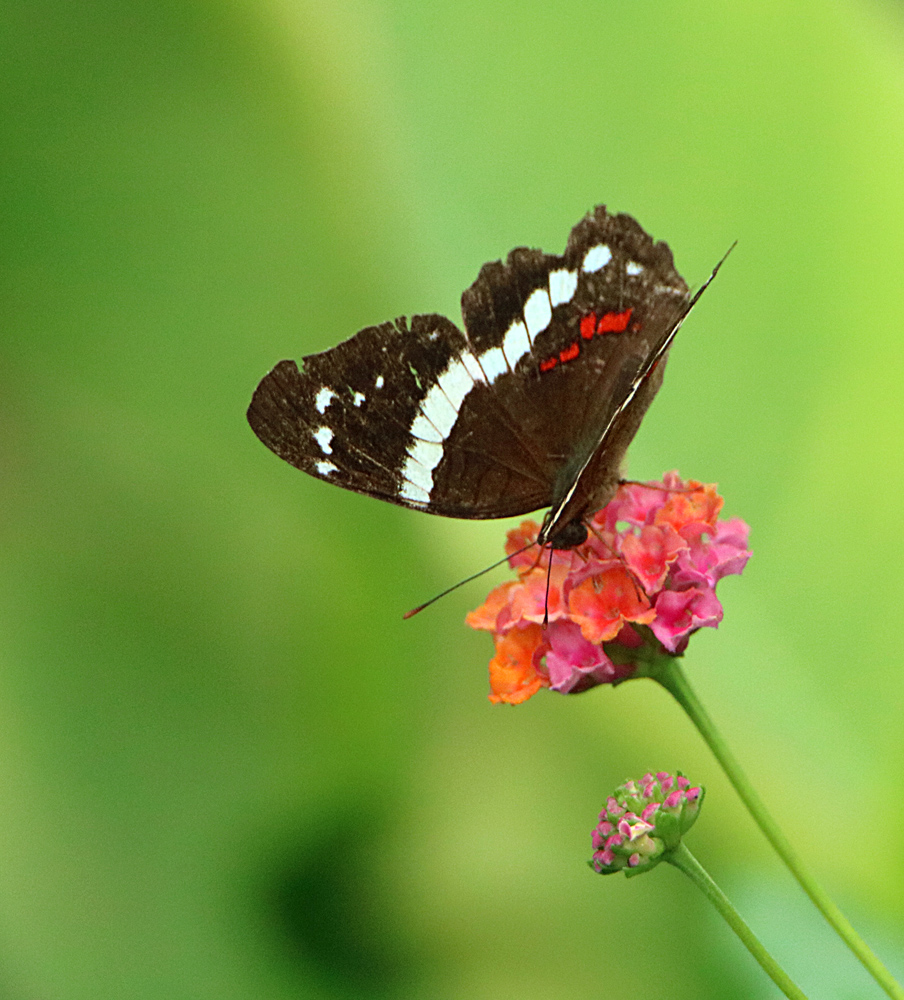
¡Pura Vida!
The big yellow patch is what indicates that it is a male, while the female has only the brown spot on each wing. The feature photo is one typical view with a greenish/yellowish hew on the folded wings while the top of wings are usually a bright white like the photo below where the same butterfly is strangely contorted. See more of my photos of this interesting butterfly in my gallery: White Angled-Sulphur, Anteos clorinde. They are found as residents from Argentina to Mexico with migrants going into the Southwestern U.S. and Great Plains.

He’s becoming a favorite among the flowers and not sure he comes to the feeders that are dominated by the Rufous-tailed. See more photos from this week in the GALLERY: Blue-vented Hummingbird.
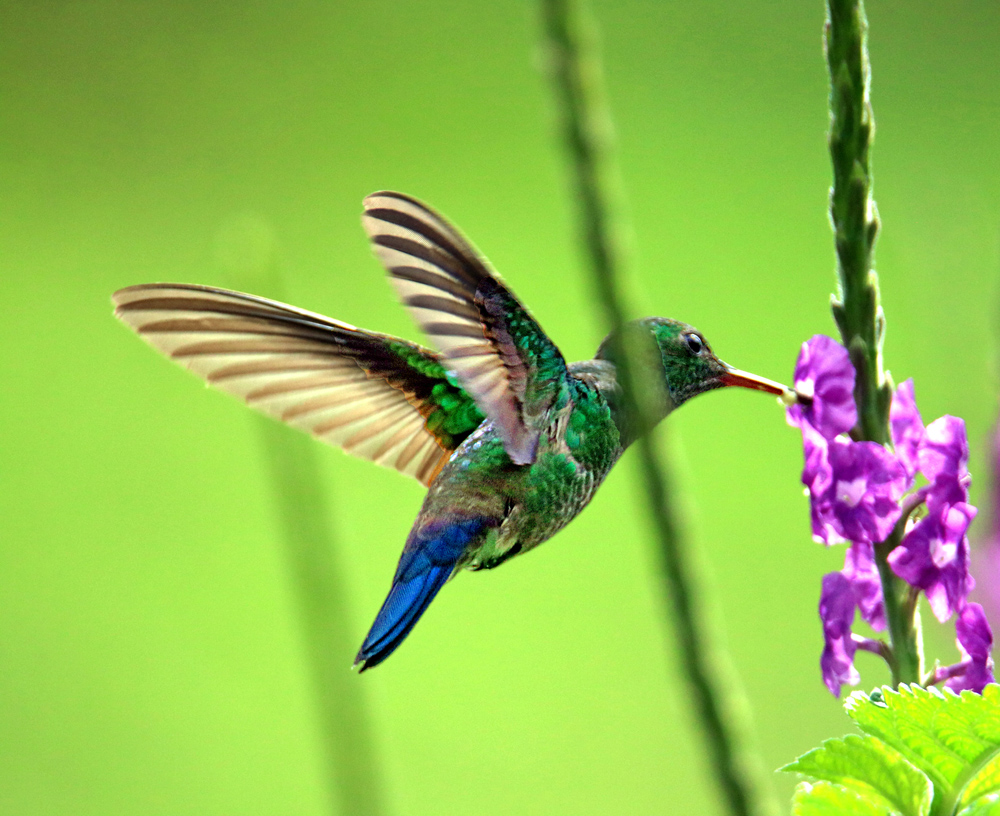
¡Pura Vida!
This is one that I have constantly confused with the Thoas Swallowtail with very little, tiny differences. But I think I have this one identified correctly this time. 🙂 From my garden and of course there is a GALLERY: Western Giant Swallowtail.
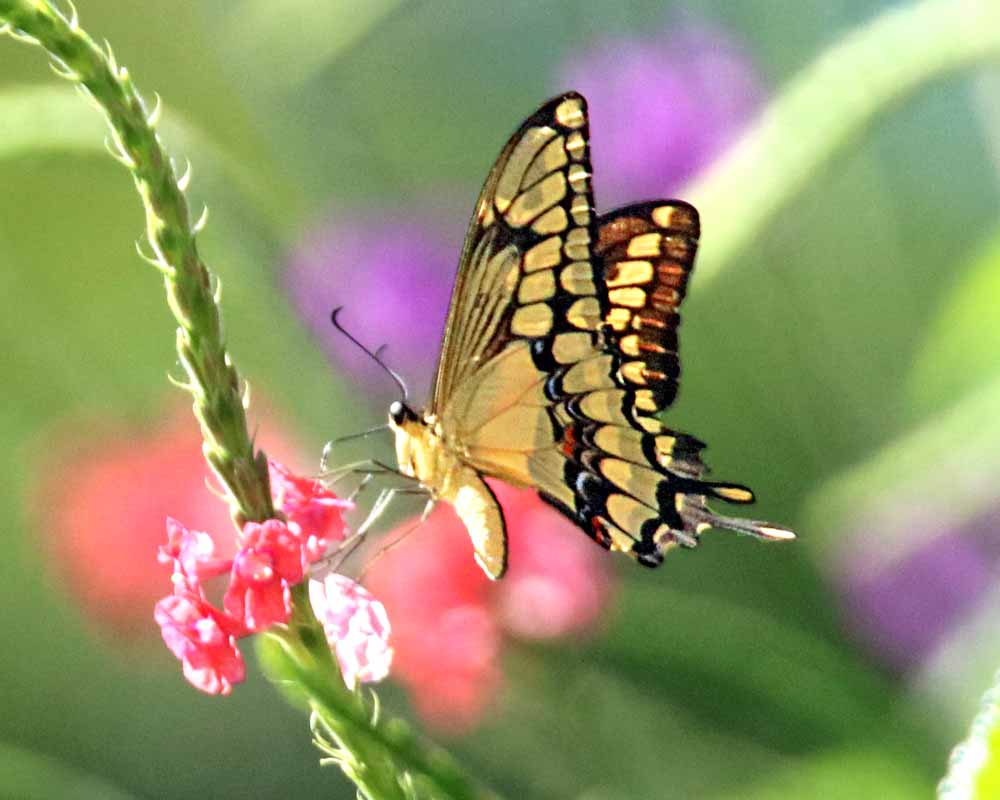
A tiny little creature who stays close to the ground and on ground cover flowers like this. Not my first sighting, but first one this year. Formerly called Tulcis Crescent; see more photos in the Gallery: Pale-banded Crescent, Anthanassa tulcis.
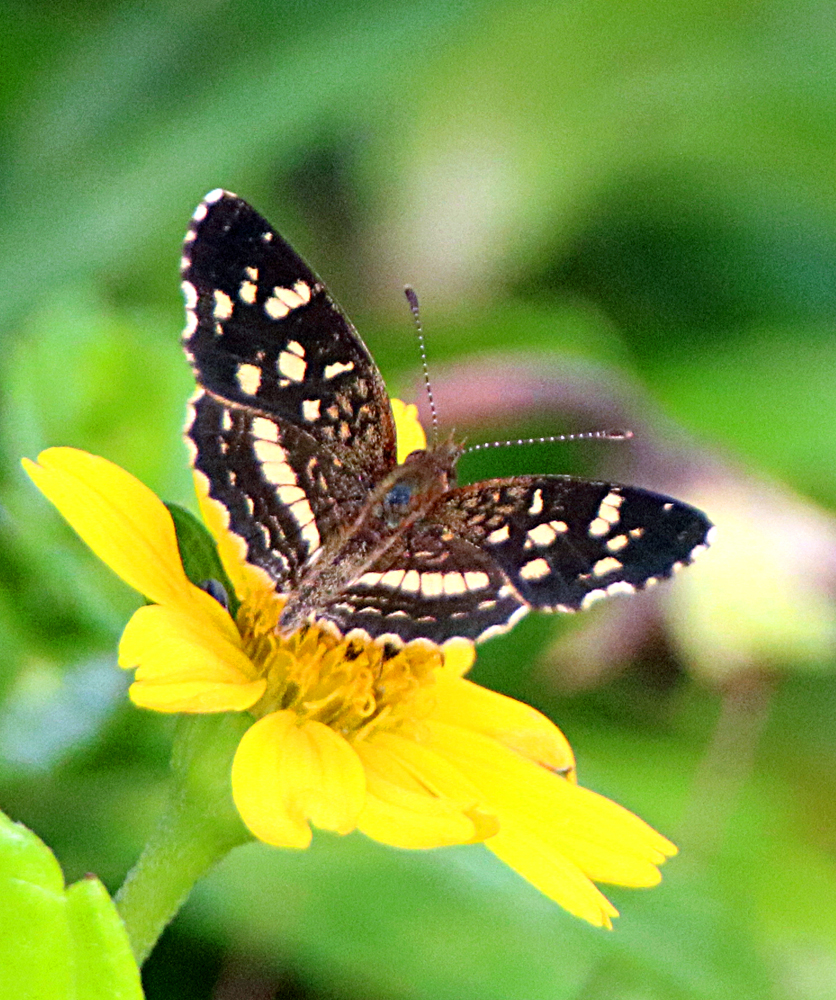
¡Pura Vida!
In the past two years this was seen more often than this year for some reason. It was frequently near the ground or on grasses and ground-cover, but this time in October mostly on my Lantana flowers. It is very small, about the size of my thumbnail when his wings are folded. See more of my photos in the GALLERY: Hermes Satyr. This species is almost identical to another one found in the U.S. called Carolina Satyr, which is what I first labeled these guys here, but all indications are that here in Central America they are called Hermes and considered a different species. Here’s two shots from my garden . . .
